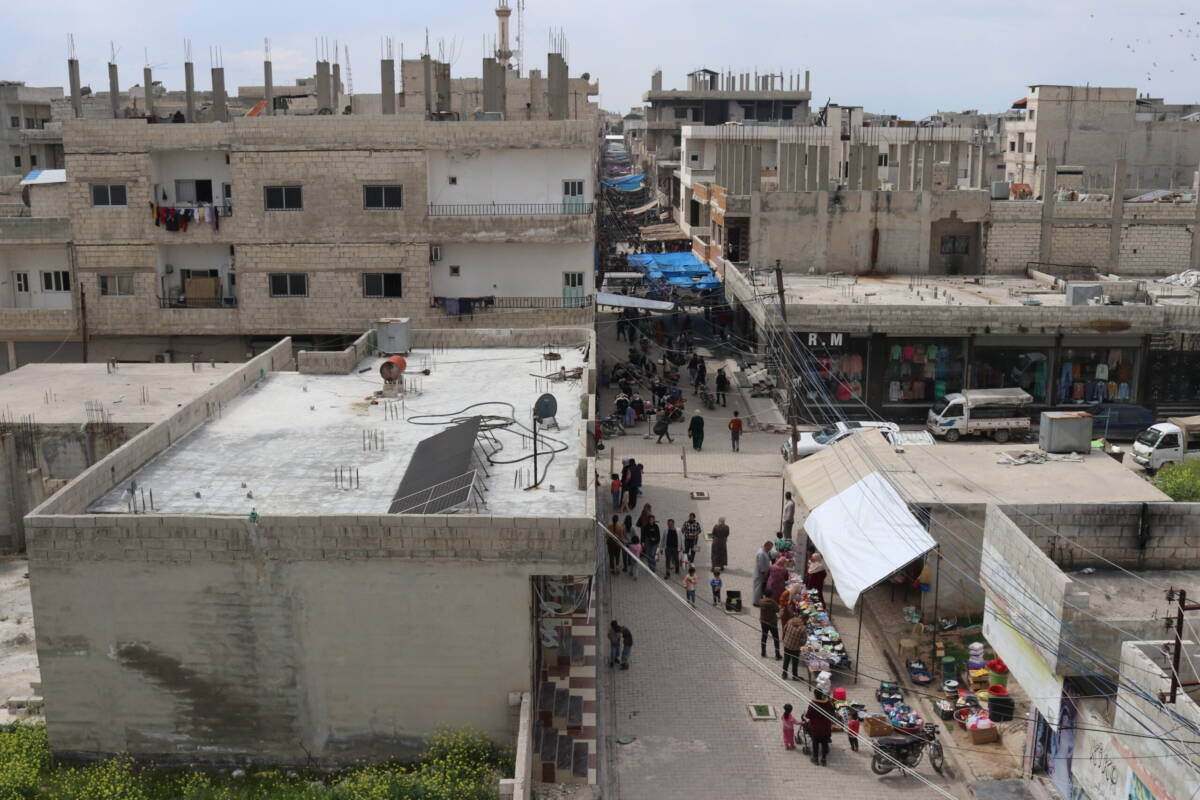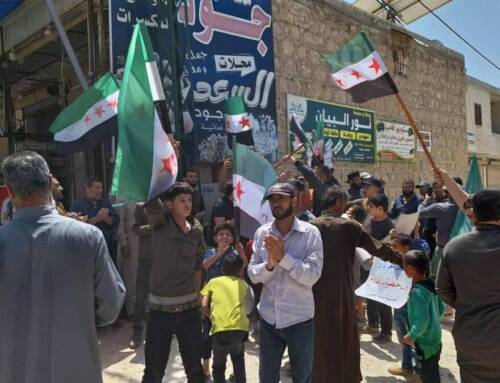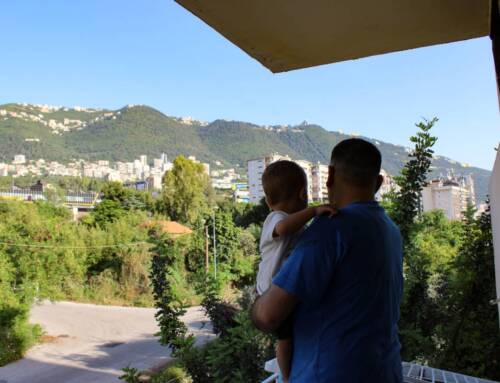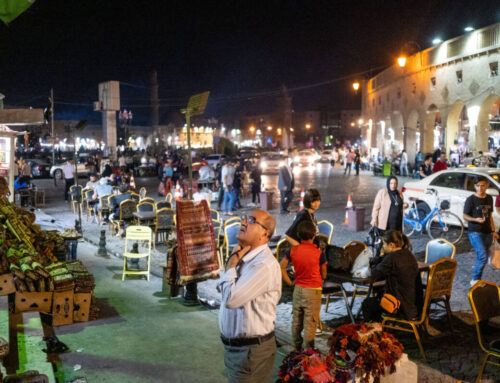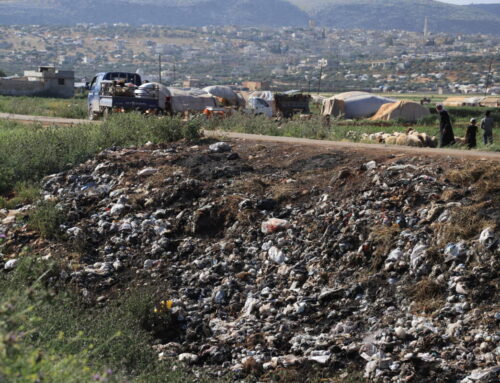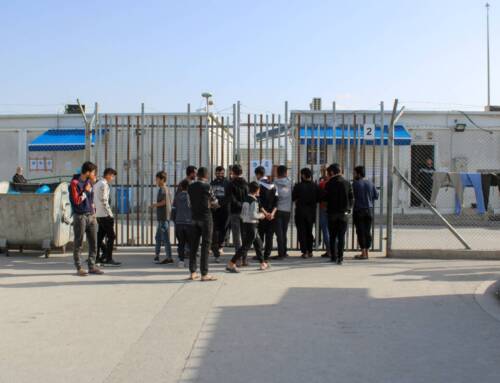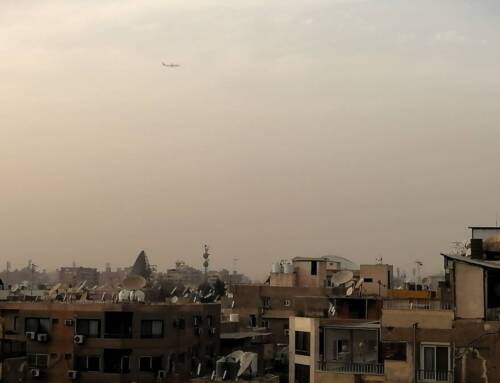Kobani’s real estate market stagnates as demand for migration rises
In northern Syria’s Kobani, a border city facing Turkish shelling and continuous threats of a ground assault, many residents are trying to sell their property to pay for a way out. With the city’s future uncertain, there are few buyers.
3 May 2024
ERBIL — For eight months, Bozan Sheikho, 44, has been trying to sell his property in Kobani to fund migration to Europe. His asking price is low, but he has not found a buyer in the Syrian Democratic Forces (SDF)-controlled northern Syrian city, also known as Ain al-Arab. Sheikho worries that, in the end, he will be forced to sell for “dirt cheap.”
Sheikho owns two shops in Kobani. For one, located on a main street, he is asking for $10,000—less than half of its $20,000 value in 2019, just before United States (US) forces nearby pulled out at the order of former President Donald Trump and the city came under near-constant Turkish threats. Sheikho’s other shop is larger, but on a side street. He is charging the same price for it, though it is worth around $15,000, he told Syria Direct.
Alongside the shops, Sheikho owns a hectare (10 dunums) of land in the Kobani countryside that he is looking to sell for $5,000. This, too, is below its estimated $9,000 value before 2019.
Outside Syria, Kobani is perhaps best known as the target of a four-month siege by the Islamic State (IS), a hard-won battle that ended with Kurdish forces driving the extremist group from the city with the support of US-led coalition airstrikes. After IS was expelled in 2015, newfound stability saw the city’s real estate market improve.
Then, in October 2019, Turkey and the Ankara-backed Syrian National Army (SNA) launched Operation Peace Spring. The military offensive against the SDF ended with the attacking forces taking control of Ras al-Ain (Serekaniye) in Hasakah province and Tal Abyad in Raqqa province, towns on the Syrian-Turkish border east of Kobani. Property sales in the city, its future increasingly uncertain, declined once more.
Turkey continues to threaten and repeatedly shell Kobani, as recently as last month. In late 2022, when Ankara launched its Operation Claw-Sword and struck targets across northern Syria and Iraq in retaliation for a bombing in Istanbul, it also threatened areas including Kobani with a ground assault.
Facing insecurity and an uncertain future in Kobani, many of the city’s residents now dream of leaving it behind and migrating to Europe.
Many residents like Sheikho have put their properties up for sale, Berkel Mustafa, who owns a real estate office in Kobani, said. The list of properties he currently has for sale includes around 10 houses, 25 residential plots of land, 15 residential apartments and three shops. All belong to people who are looking to raise money for migration “in search of a more stable and safe life,” he said. But while many properties are on the market, there is “a decline in real estate sales. I haven’t bought or sold any property in two months,” he added.
The sound of an explosion rang out as Mustafa spoke to Syria Direct last month, prompting the real estate dealer to disconnect the call and rush home. It was caused by a Turkish drone, it later turned out, targeting a vehicle in the city center. The same day, Turkish artillery struck the village of Dekemdash west of Kobani, damaging a number of houses.
Speaking the day after the bombing, Mustafa was upset with the state of his city. He attributed its faltering real estate market to “Turkish threats, and the withdrawal of US forces in 2019.”
Half price
“Turkish threats and shelling create a state of fear among the population,” so “nobody gambles on buying a property in Kobani, because its fate is uncertain, even while offers for sale from people looking to migrate increase,” Mustafa said. Commercially, this is known as “oversupply and falling demand, which pushes prices down,” he added.
“As soon as Kobani is subjected to Turkish bombardment, buying and selling completely stops for at least three months,” he added.
Kobani real estate has lost around 50 percent of its value since 2019, while buildings affected by the February 2023 earthquake in northern Syria and southern Turkey have lost between 65 and 70 percent of their value, he estimated.
Before 2019, the price per square meter of residential real estate on some streets reached $200, while it currently goes for $75 or less—a difference that is not related to the decline of the Syrian pound. Outside the city limits, the going price for land once ranged from $25 to $60 per square meter, but currently varies from $5 to $20. “Even so, there is little demand,” Mustafa said. In Kobani, real estate is “dead.”
Downtown, the price per square meter ranged between $700 and $800 in 2019, but has fallen to $350 per square meter, even though these properties are “excellent, in terms of location,” he added.
Mustafa, like other Kobani real estate dealers, once sold land and properties within days of buying them, “for good profits,” he recalled. Today, he cannot find anyone who wants land he bought to trade several months ago. If he does find a client, he “will lose on [the sale], because the prices have fallen.”
With real estate losing its value and the market declining, Mustafa has lost a huge margin of his profits, which used to reach 30 percent of the value of the property. Currently, his profit margin at the prevailing rate is no more than 10 percent.
The brokerage commission between the seller and buyer is one percent from the parties to the sale. Although commission is fixed and has not changed, the halving of real estate prices means that Mustafa’s cut has also been halved. Where he once received $200 from each party for selling a $20,000 apartment, if the property now sells for half that, he receives $100 instead.
What properties are selling in Kobani are being bought by people originally from the area who are living abroad in Europe and Turkey, Mustafa explained. The demand from these people is “low” despite a significant fall in prices.
Kobani’s real estate recession has also impacted the construction industry and suppliers, Fadel Shahin, a construction worker from the city, told Syria Direct.
Between 2016 and 2019—or between the expulsion of IS and the withdrawal of US forces—Kobani’s real estate and construction market flourished, and Shahin made a good living. After 2019, in the wake of Turkey’s attack on the cities of Ras al-Ain and Tal Abyad, work became scarce.
After the Turkish operation, Shahin’s work was limited to restoring and maintaining buildings. Kobani’s construction workshops operated at “the bare minimum,” and eventually “almost completely shut down in 2021, due to increasing Turkish threats” that prompted residents to “wait, and stop construction and restoration,” he said. With little work at home, Shahin decided to leave for Libya, where he is currently located.
Continuing threats
Following the late 2022 bombing of Istanbul’s Istiklal Avenue, Turkish authorities announced that the attack was carried out by a Syrian citizen working for the Kurdistan Workers’ Party (PKK) who received her instructions from Kobani. Turkey considers the SDF, which controls Kobani, to be a terrorist organization and an extension of the PKK. These statements were followed by airstrikes targeted border areas in northeastern Syria, the most violent of which were against Kobani.
Ankara has since continued its threats, in the form of both official statements and military operations against targets in northeastern Syria, including Kobani. On March 18, Turkish President Recep Tayyip Erdoğan said his forces would fully secure his country’s borders with Iraq, and “definitely complete our unfinished business in Syria.”
At the start of this year, Erdoğan said following a meeting with his government: “We will not stop until we have destroyed all of the terrorist nests established with insidious intentions in Syria, from Tal Rifaat to Ain al-Arab, Hasakah to Manbij.”
On April 7, SDF spokesperson Farhad al-Shami told Channel 8, a media organization based in Sulaymaniyah in the Kurdistan Region of Iraq, that “the Turkish government plans to attack the area surrounding Kobani this summer,” and “carry out a ground assault in the areas between Girê Spîi [Tal Abyad] and Jarablus to approach Kobani.”
By taking control of Kobani, Ankara would connect territory it holds in the Euphrates Shield and Peace Spring areas, extending what the SDF calls “the Turkish occupation” within Syria.
The “fragile” security situation and risks facing Kobani pushed Adel Ramo, 55, to sell his 200 square meters of residential land in Kobani for $10,000, which before 2019 was worth $20,000, he told Syria Direct.
In July 2023, Ramo decided to part with his land to pay for his 19-year-old son to emigrate to Germany. Real estate is “the last card” many Syrians have to play to cover migration costs.
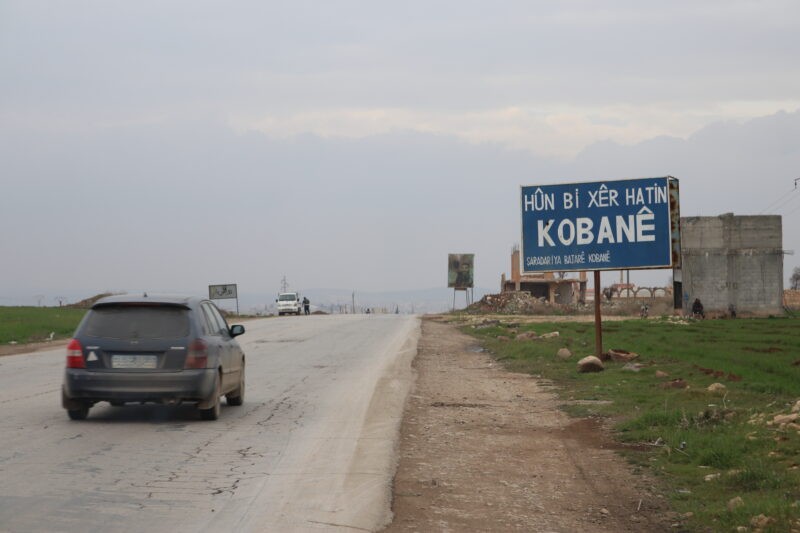
The southern entrance to Kobani (Ain al-Arab), a Kurdish-majority city on the border between Turkey and Syria’s northern Aleppo province, 8/4/2024 (Syria Direct)
Months after selling his land, Ramo sold his car for $5,000, this time to finance his own migration. He made the decision because of “Turkey’s threats and repeated bombing of the area, in addition to the worsening living situation in Kobani.”
Ramo has made multiple attempts to cross the border with Turkey, aiming to continue onwards to Europe. Each time, Turkish security forces caught him and deported him back to Syria. “These attempts cost me $4,000 I paid to the smugglers,” he said.
Ramo knows that the journey he hopes to make is fraught with danger, particularly the Mediterranean Sea crossing from Turkey to Europe. Still, he remains determined to “find an appropriate opportunity—I won’t stop trying until I reach Europe.”
While Ramo has so far failed to emigrate, Shahin has come as far as Libya. He left Kobani at the start of 2024, illegally crossed the border to Lebanon and obtained a passport from the Syrian embassy in Beirut, which allowed him to travel to the North African country. From there, he ultimately hopes to cross the Mediterranean and reach Germany or Great Britain.
Worsening living conditions and the mass migration of “coworkers, friends and neighbors” were what finally drove Shahin to leave. To pay the costs, he sold his 160-square-meter house, located in Kobani’s western Boutan neighborhood, which cost him $20,000, at almost half its value. He also sold his car for $6,000, and his wife sold her jewelry to fund travel for himself, his wife and children.
When asked about his own motives for attempting to migrate, Sheikho responded with a question: “What doesn’t push to migrate? There’s no work. I have no confidence in the Autonomous Administration schools and curricula, and I have no financial ability to send my children to regime areas to attend its schools. We suffer from poor and declining services, especially electricity.”
“The Autonomous Administration has no laws encouraging stability and work,” he added. Kobani is also suffering a fuel crisis, marked by the sight of “lines of cars at the fuel stations, and the price of a cylinder of household gas being raised from SYP 10,000 to $10 paid in Syrian pounds,” or approximately SYP 144,000 according to the current black market exchange rate of SYP 14,450 to the dollar.
“Every so often, some type of basic good goes missing from the markets, and its price goes up,” Sheikho said. “We want to be rid of this difficult living situation and migrate to Europe, for our children to live far from these hardships.”
Commenting on that, Adnan Bozan, the head of the Kurdish National Council (KNC)-affiliated local council in Kobani, also laid a portion of blame with the Autonomous Administration. While “Turkish threats cause insecurity, it cannot be ignored that the practices of the de facto authorities—political harassment, failure to provide services, kidnapping minors, banning recognized education [curricula] and imposing unrecognized, ideological curricula” also contribute to the decision of Kobani’s residents to leave or not return to the city, he said.
“Stopping the deliberate starvation practices by the de facto authorities and involving all the political and social components in the area’s administration, not giving the Turks excuses to threaten and attack the area and providing services would stop the bleeding of migration from Kobani.”
“If Turkey uses the pretext of the presence of PKK cadres in Syrian Kurdistan, and that they are administering the region,” then raising PKK slogans and pictures of [Abdullah] Öcalan in northern Syria is “tantamount to providing the Turks with a free service, and strengthening their position before the international community,” Bozan said. “The Kurdish people have paid and continue to pay the bill for Turkey’s conflict with the PKK.”
Sheikho aims to leave the border city “before I’m forced to leave it against my will,” he said. He hopes to find somebody to buy his properties so he can migrate to Europe alone, then work to reunite with his family. “The price of what I am selling is not enough to cover travel costs for the whole family,” he said.
This report was originally published in Arabic and translated into English by Mateo Nelson.

